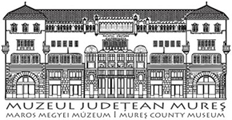Marisia - Maros Megyei Múzeum Évkönyve 33/4. (2013)
Articles
10 S. Berecki their rudimentary and schematic character in a period when potters achieved great masterpieces, but also because of the presence of wild animals. The shaping of these objects did not necessitate high manual dexterity, as experiments have shown that an unskilled person could accomplish such an object in five to ten minutes.39 Considering them the ‘finger exercises’ of potters40 would be contradicted however by their distribution on a relatively large area. Since some of the pieces have been provided with holes, an apotropaic role can be presumed;41 but a profane utilization is also probable, or even a changing functionality of these clay objects can be presumed.42 Since no figurine has been discovered in grave, their connection to the funerary practices can be excluded.43 Either way, the zoomorphic clay figurines are symbols of the pastoral ideology of the period, and based on the distribution map one can conclude that they reflect the close intercultural contacts on a ritual and ideological level between communities on both sides of the Carpathians.44 It is questionable if they were also art objects in the broader context of symbolic material culture,45 but surely these social products give an insight of the cultural system of the period46 through the eyes of the manufacturer - (and therefore in a subjective mode), cultural system characterized by sedentary lifestyle, agriculture and animal breeding.47 It remains an unanswered question, however, whether these objects were used in rituals or ceremonies meant to influence these factors. In any case, they certainly underline the - profane or cultic - importance of these animals, and from the wildlife the role of the wild boar for the communities from the beginning of the first millennium BC. 39 Tarbay 2012. 40 Tarbay 2012. 41 Berecki 2012, 54. 42 Berecki 2012, 55, fig. 5. 43 Ursache 1999, 45. 44 Metzner-Nebelsick 2000, 164. 45 Mina 2007, 264. 46 Mina 2007, 264. 47 Vasiliev 1986, 80. References Ardeu - Balos 2003 A. Ardeu - A. Balos, Figurine zoomorfe descoperite la Magúra Uroiului, Marmatia 7/1, 183-186. Berecki 2012 S. Berecki, An Early Iron Age Zoomorphic Clay Figurine from Tärgu Mure§, Marisia 32, 2012, 47-58. Bindea 2008 D. Bindea, Arheozoologia in pre- §i protoistorie (Cluj-Napoca 2008) Gróh 1984 D. Gróh, Előzetes jelentés a Visegrád-Csemetekert lelőhelyen végzett későbronzkori és koravaskori feltárásról, CommArchHung 1984, 53-66. Gróh 2009 D. Gróh, A Visegrád-lepencei őskori állatszobrok, in: L. Bartosiewitz - E. Gál - I. Kováts, Csontvázak a szekrényből. Válogatott tanulmányok a Magyar Archaeozoológusok Visegrádi Találkozóinak Anyagából 2002-2009 - Skeletons from the Cupboard. Selected Studies from the Visegrád Meetings of Hungarian Archaeozoologists 2002- 2009, Opitz Archaeologica 3 (Budapest 2009) 25-34. Gumä 1993 M. Gumä, Civilizafia primei epoci a fierului in sud-vestul Romäniei, Bibliotheca Thracologica 4 (Bucure^ti 1993) Horedt et al. 1962 K. Horedt - I. Berciu - Al. Popa, Säpäturile de la Teleac (r. Alba), MatCercArh 8, 1962, 353-358. Horedt 1963 K. Horedt, Hallstättische Tierfiguren aus Lechin|a de Mure§, Rayon Ludu§, Dacia 6, 1963, 527-534. Kamuba 2003 M. Kamuba, Perifieria de est a complexului hallstat - tian timpuriu cu ceramicä incizatä §i imprimatä (secolele X-VIII i.e.n. in interfluviul Nistru-Siret), in: E. Sava (ed.), Interference cultural-cronologice in spafiul nord-pontic (Chisinau 2003) 183-210. Körösfői 2009 Zs. Körösfői, Un complex al culturii Santana de Mure^-Cerneahov in curtea cetäpi din Tärgu Mure§, Marisia 29, 2009, 145-160. László 1994 A. László, ínceputurile epoch fierului la est de Carpafi. Culturile Gáva-Holihrady §i Corláteni- Chi^inäu pe teritoriul Moldovei, Bibliotheca Thracologica 6 (Bucure§ti 1994) László 2001 A. László, Prima epocä a fierului. Perioada timpurie, in: M. Petrescu-Dimbovfia - Al. Vulpe (coord.), Istoria románilor, vol. L, Mo§tenirea timpurilor indepártate (Bucure^ti 2001) 294-327. Levifid 1994 O. Levifid, Cultura hallstattului canelat la räsärit de Carpafi, Bibliotheca Thracologica 7 (Bucure$ti 1994)
